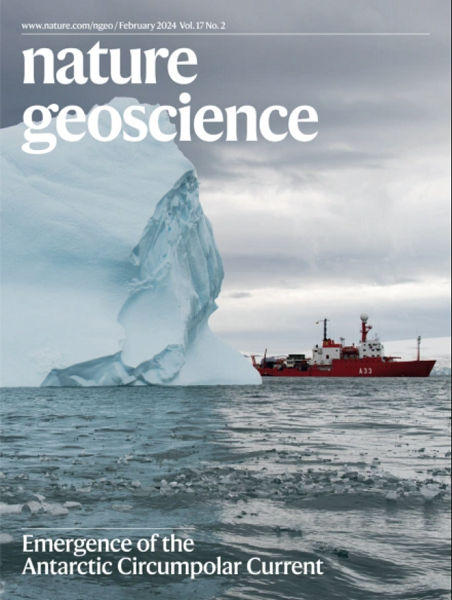Increased plant productivity exacerbates subsoil carbon losses under warming via nitrogen mining
IF 16.1
1区 地球科学
Q1 GEOSCIENCES, MULTIDISCIPLINARY
引用次数: 0
Abstract
Soils can be either a source or sink of atmospheric CO2 depending on how soil organic carbon (SOC) responds to climate warming and changes in plant productivity. Whereas warming typically accelerates SOC decomposition, the effect of plant productivity changes remains unclear. Here we use a space-for-change substitution approach to analyse a global dataset of SOC measurements down to 1 metre. We find that warming-induced SOC reduction in the 0–0.3-m topsoil is gradually offset by increasing plant productivity but exacerbated in the 0.3–1-m subsoil until plant productivity increase crosses a threshold of 30%. Consequently, entirely offsetting warming-induced SOC reduction in the top metre of soil requires an unrealistically high increase in plant productivity, albeit with substantial variance across ecosystems. Soil carbon-to-nitrogen ratio is the dominant predictor of the variance in SOC response, as this ratio determines whether nitrogen released during carbon loss meets the requirement for additional plant growth or whether additional nitrogen must be mined from soil organic matter. Such mining accelerates SOC losses, particularly in the subsoil, where the soil carbon-to-nitrogen ratio is lower than in topsoils. We conclude that globally, increased plant productivity may exacerbate SOC losses under climate warming, particularly in the subsoil. Soils may release more CO2 under warming when increases in plant productivity mine nitrogen from soil organic matter, according to an analysis of a global dataset of soil organic carbon measurements.


植物生产力的提高通过氮开采加剧了变暖下的地下碳损失
土壤可以是大气CO2的源或汇,这取决于土壤有机碳(SOC)对气候变暖和植物生产力变化的反应。虽然变暖通常会加速有机碳的分解,但植物生产力变化的影响尚不清楚。在这里,我们使用空间变化替代方法来分析低至1米的SOC测量的全球数据集。研究发现,升温引起的表层土壤有机碳减少在0 - 0.3 m土壤中逐渐被植物生产力的增加所抵消,但在0.3- 1 m土壤中加剧,直到植物生产力增加超过30%的阈值。因此,要完全抵消由变暖引起的土壤表层有机碳减少,需要植物生产力实现不切实际的高增长,尽管不同生态系统之间存在很大差异。土壤碳氮比是土壤有机碳响应变化的主要预测因子,因为该比值决定了碳损失过程中释放的氮是否满足植物额外生长的需要,或者是否必须从土壤有机质中开采额外的氮。这种开采加速了有机碳的损失,特别是在土壤碳氮比低于表层土壤的底土中。我们得出结论,在全球范围内,植物生产力的提高可能加剧气候变暖下的有机碳损失,特别是在底土中。
本文章由计算机程序翻译,如有差异,请以英文原文为准。
求助全文
约1分钟内获得全文
求助全文
来源期刊

Nature Geoscience
地学-地球科学综合
CiteScore
26.70
自引率
1.60%
发文量
187
审稿时长
3.3 months
期刊介绍:
Nature Geoscience is a monthly interdisciplinary journal that gathers top-tier research spanning Earth Sciences and related fields.
The journal covers all geoscience disciplines, including fieldwork, modeling, and theoretical studies.
Topics include atmospheric science, biogeochemistry, climate science, geobiology, geochemistry, geoinformatics, remote sensing, geology, geomagnetism, paleomagnetism, geomorphology, geophysics, glaciology, hydrology, limnology, mineralogy, oceanography, paleontology, paleoclimatology, paleoceanography, petrology, planetary science, seismology, space physics, tectonics, and volcanology.
Nature Geoscience upholds its commitment to publishing significant, high-quality Earth Sciences research through fair, rapid, and rigorous peer review, overseen by a team of full-time professional editors.
 求助内容:
求助内容: 应助结果提醒方式:
应助结果提醒方式:


